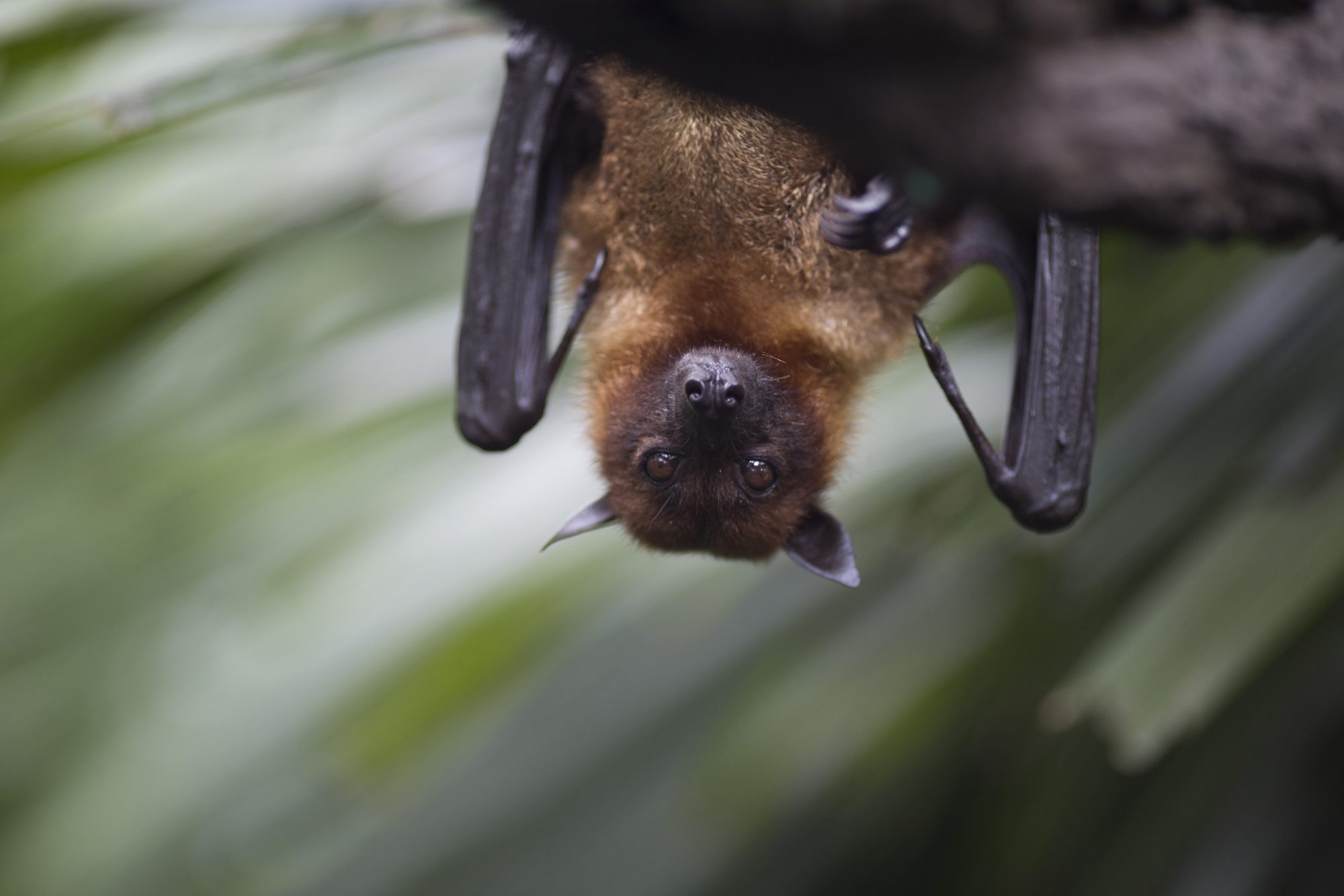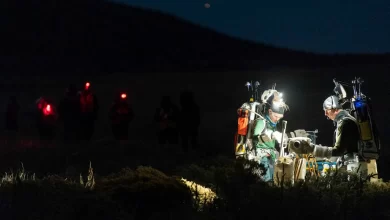Tool Identifies Likely Reservoir Species for SARS-CoV-2
تطوير أداة ذكاء اصطناعي لتحديد الحيوانات التي تلتقط وتنشر كورونا
the-scientist.com
As public health experts continue to wrestle with the spread of SARS-CoV-2 among people, concerns that the virus may find other viable hosts have grown. If humans pass the virus on to other species that are susceptible to infection, those animals could act as a reservoir for the virus and eventually pass mutated versions back to humans, extending and potentially worsening the pandemic. The big question is which species are most likely to pose this risk.
To begin to answer that, researchers from the Cary Institute of Ecosystem Studies in New York have developed a machine-learning model that uses an animal’s traits to predict the structure of its angiostatin converting enzyme 2 (ACE2) receptors—the primary molecular receptor SARS-CoV-2 uses to enter cells. Based on those structures, the team identified species most likely to be susceptible to contracting and spreading SARS-CoV-2, the team reports today (November 16) in Proceedings of the Royal Society B.
Among 5,400 animals, the new study highlights certain pets, farmed animals, and wild species as potentially vulnerable to the virus. Some, such as cats and primates, were expected, especially in light of documented infections. Others, such as the scimitar-horned oryx, are more surprising, as despite the animals’ contact with humans in zoos and breeding programs, infections have not yet been reported.
The authors say their findings can help prioritize species for testing and surveillance, something experts say is sorely needed. “It is an excellent study,” says Suresh Kuchipudi, who researches zoonotic viruses at Pennsylvania State University and was not involved in the work. “The recent discovery of widespread SARS-CoV-2 infection of free-living white-tailed deer highlighted the urgent need for expanded active surveillance of potential animal reservoirs. This tool could help identify at-risk animal species to implement more targeted surveillance programs.”
Barbara Han, the senior author of the new study and a disease ecologist at the Cary Institute of Ecosystem Studies in New York, and her team began this research more than a year ago, long before news broke that more than 80 percent of white-tailed deer in Iowa were infected with the virus last winter. At the time the team started, people had only found a handful of infections in animals.
Since so many animals have ACE2 receptors, scientists had started looking at the amino acid sequences of different animals’ ACE2 receptors and comparing them to those found in humans in hopes of predicting susceptibility. But protein sequences are not always a reliable indicator of whether a virus can bind the receptor, so Han and her team decided to use the sequences to model three-dimensional receptor structures, which more accurately forecast how tightly SARS-CoV-2 binds. “We just downloaded as many of those [sequences] as we could find from available public repositories” to model their 3D forms, says Han.
Unfortunately, ACE2 sequences have not been determined for most animals. The available ones only allowed the team to predict susceptibility for a few hundred animals, 142 of which were mammals.
To expand the projections to thousands of additional species, Han and her team turned to artificial intelligence. They collected biological data on 5,400 species, from how big they are to what they eat. These characteristics, Han says, can help predict the structure of the ACE2 receptor in animals that lack ACE2 sequence data.
“ACE2 is highly conserved across vertebrates because it is so fundamental to controlling things like blood pressure,” says Han. Characteristics such as size and diet can hint at other aspects of an animal’s biology, like whether it is prone to high blood pressure—and that, in turn, hints at the structure of the animal’s its ACE2. “We argued that the traits should be relatively predictive of whether the species has a kind of ACE2 that would strongly bind the virus,” Han explains.
Using the traits and the 362 known ACE2 sequences they found, she and her team created a machine learning model that estimated and ranked each animal’s likely susceptibility to contracting and spreading the virus. Primates consistently ranked at the top of the list, as did treeshrews, sloths, anteaters, and pangolins.
Some of the model’s predictions have already come true: it suggested that the white-tailed deer would be particularly susceptible, for example. Others have not. For instance, the study identified pigs as a likely vulnerable species, but real-life studies have not shown them to be at high risk of becoming infected.
The researchers highlight the susceptible species most likely to encounter humans, to narrow down those that might be most important to surveil, as animals that rarely interact with humans are less likely to catch the disease or spread it back to humans even if their ACE2 receptors bind the virus. Their list of suggested surveillance priorities includes dogs and cats, the Asiatic black bear, grey wolves, mountain gorillas, and 35 species of bats.
“While the results of the predictions are not perfect, they provide a useful tool for narrowing down potentially susceptible species,” says Scott Kenney, a veterinary virologist at Ohio State University who was not involved in the study. He cautions, though, that “the predictions should be recognized for what they are: predictions requiring further testing.”
“It worries me that domestic animals ranked high in the susceptibility categories may be unfairly culled out of fear rather than facts,” Kenney adds.
Han says she shares those concerns, emphasizing the need for coordination between different types of researchers to determine the true risk. “There has to be an interaction between people who do pure modeling and people do who do pure bench work and people who do surveillance. There has to be a feedback loop between all three of us. And I don’t think that those feedbacks are common yet.”
الشرق
طور باحثون في معهد كاري لدراسات النظم البيئية في نيويورك، أداة ذكاء اصطناعي (التعلم الآلي) اصطناعي لتحديد الحيوانات التي من المرجح أن تلتقط وتنشر النسخ المحورة من “كوفيد-19”.
وسلط النموذج الضوء على كل من الحيوانات الأليفة والحيوانات البرية على أنها خزانات محتملة للفيروس، وفقاً لموقع روسيا اليوم.
وتعتمد الأداة على معلومات حول موائلها والسمات البيولوجية المختلفة لمعرفة الحيوانات التي لديها بروتين ACE2 المعين الذي كان من المرجح أن يلتصق به فيروس كورونا.
ومن أصل 5400 تم اختبارها، قام العلماء بتقليص العدد إلى 540 نوعا من الثدييات.
ووُثّقت بعض التنبؤات مسبقا على أنها مخاطر انتقال، على سبيل المثال، الكلاب والقطط والخفافيش، بينما كانت حيوانات المزرعة مثل الخنازير وحيوانات حديقة الحيوانات الغريبة إضافات مفاجئة.
وشملت الإضافات الأخرى المتوقعة: المنك والبانغولين سوندا، و35 نوعا من الخفافيش – والتي ضُمّنت ضمن أفضل 10٪ من الحيوانات التي يُرجح أن تنشر الفيروس، بما يتماشى مع نتائج المختبر.
كما صنفت الدراسة، التي نُشرت في مجلة Proceedings of the Royal Society، جاموس الماء، وعددا من الرئيسيات، بما في ذلك الغوريلا و76 نوعا من القوارض، على أنها أكثر عرضة للإصابة.
وقام الباحثون بتدريب الذكاء الاصطناعي لتحديد الأنماط بين معدلات الانتقال وحوالي 60 سمة بيئية وبيولوجية جُمعت من خلال الدراسات السابقة، بما في ذلك التداخل بين الموائل الحيوانية والبشرية بالإضافة إلى فترات الحياة والوجبات الغذائية والأحجام الخاصة بكل منهما.
وفي السابق، حُدد تسلسل الأحماض الأمينية المحددة فقط في حوالي 300 نوع، بما في ذلك حوالي 143 من الثدييات – ومعرفة أي منها أكثر عرضة للعدوى أمر أساسي للتنبؤ بانتشار الفيروس، كما قال الباحثون.
وأخبر أرينجاي بانيرجي، من جامعة Saskatchewan في كندا، New Scientist، أن النتائج ستساعد الباحثين على “تتبع العدوى الفيروسية والظهور المحتمل لمتغيرات فيروسات كورونا المتوافقة مع الحيوانات” حول العالم. وقالت باربرا هان، التي قادت الدراسة، إن التنبؤات تحتاج إلى متابعة بمراقبة منهجية ودراسات معملية.




